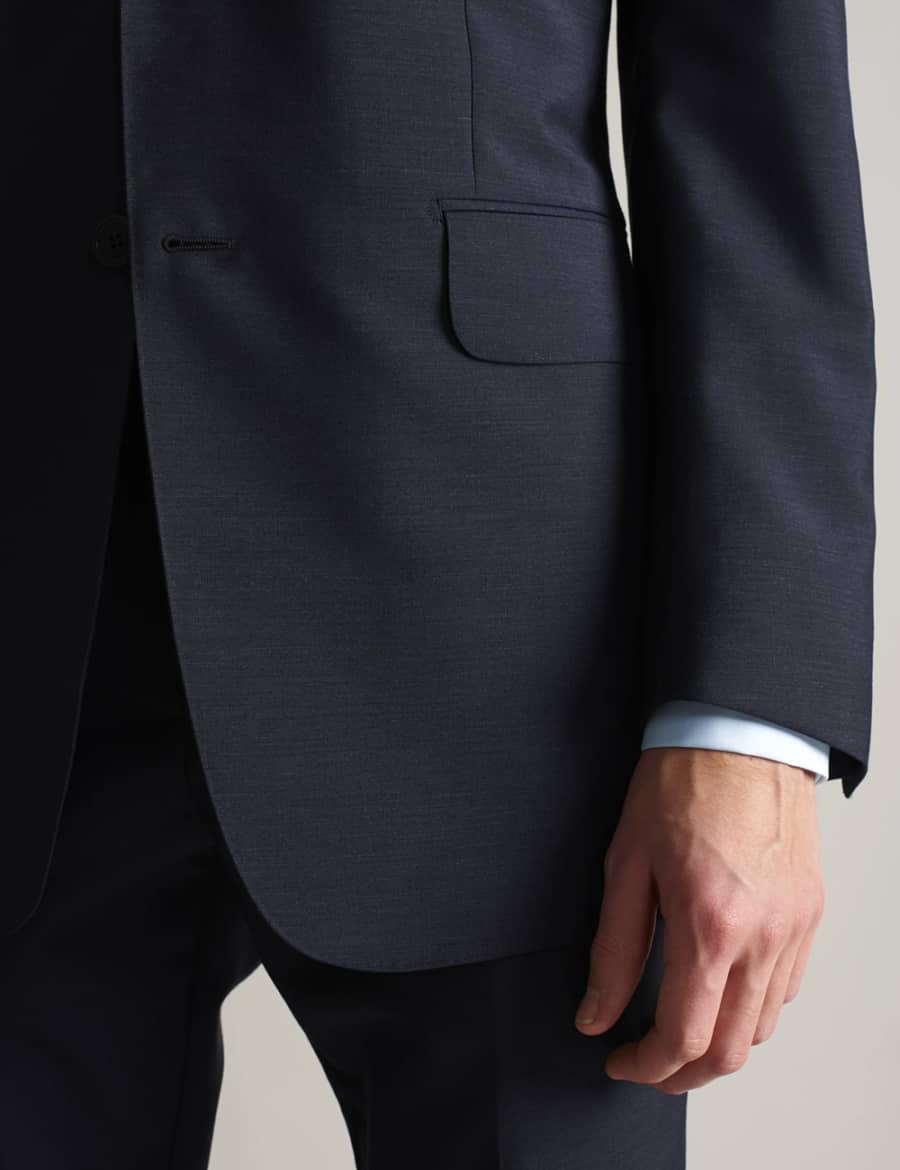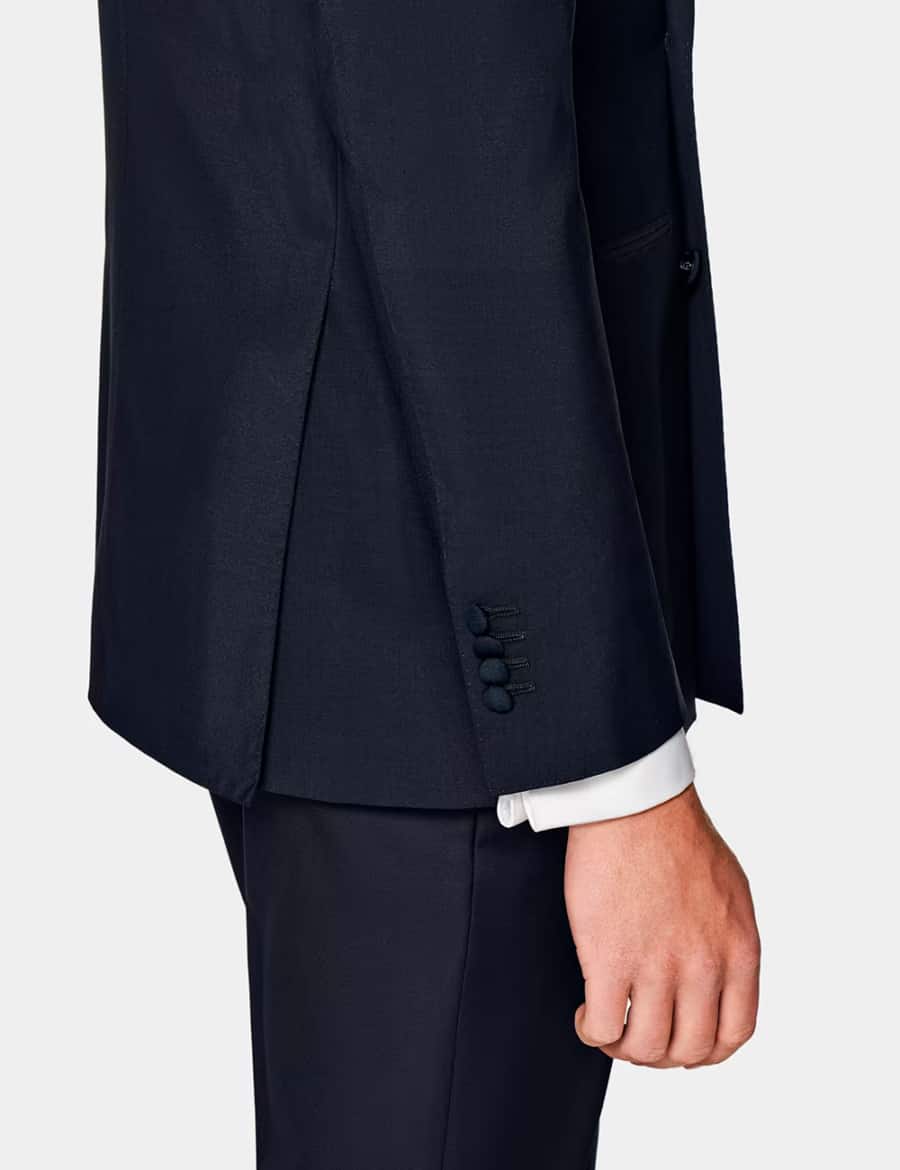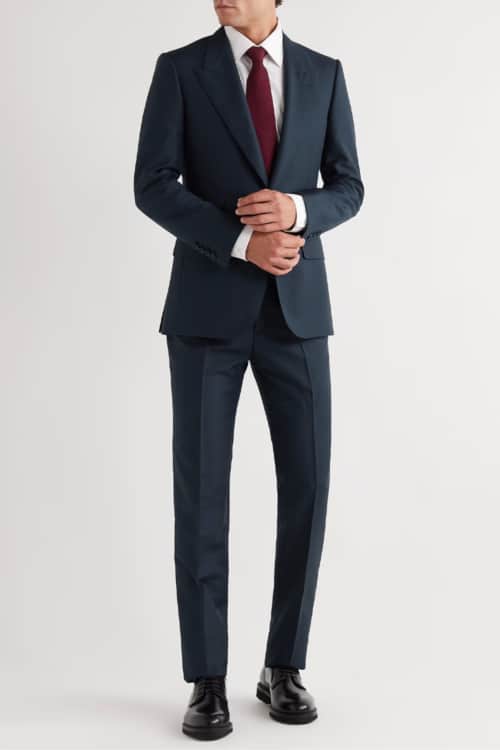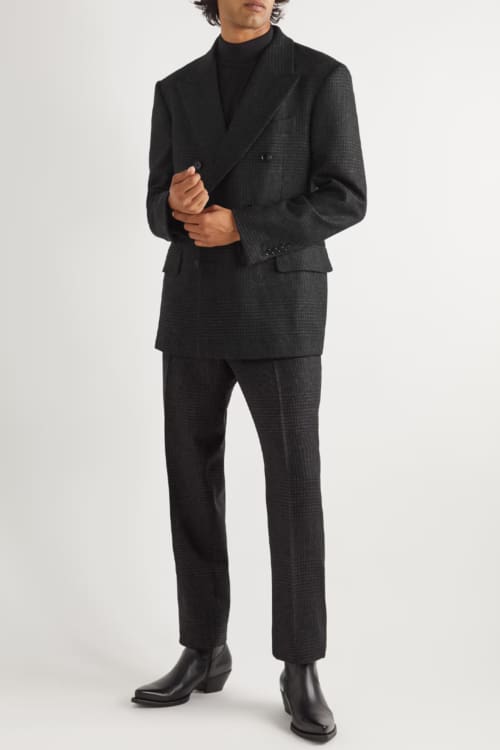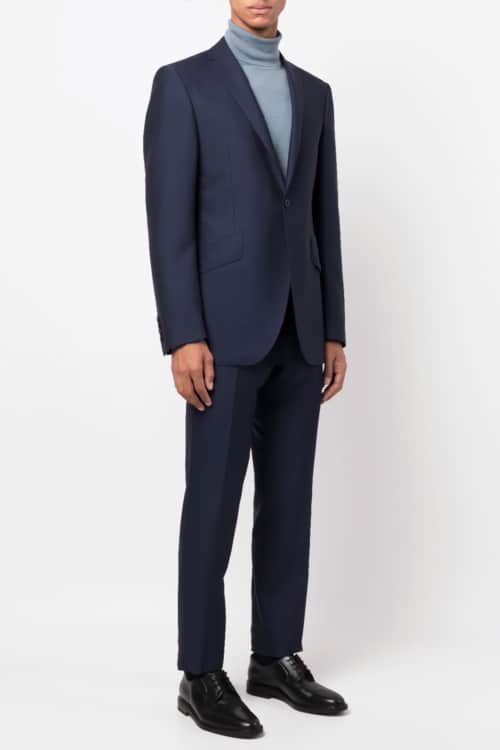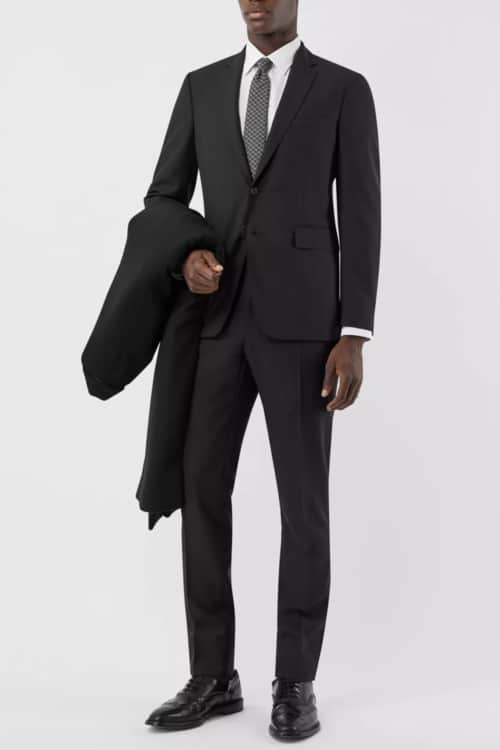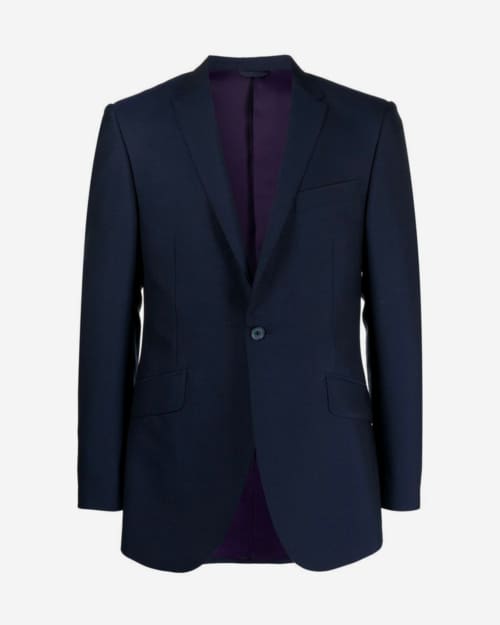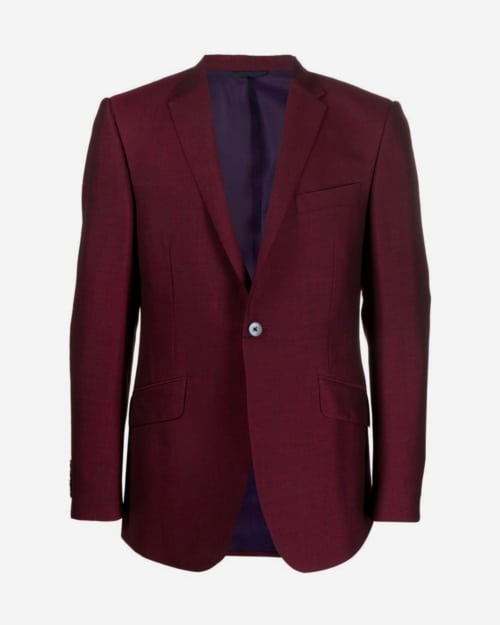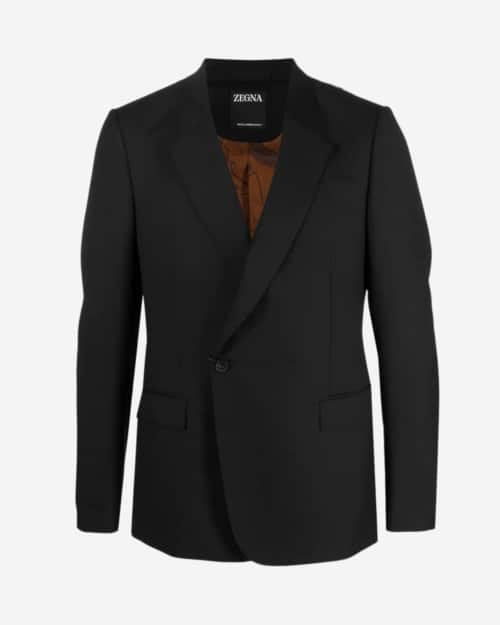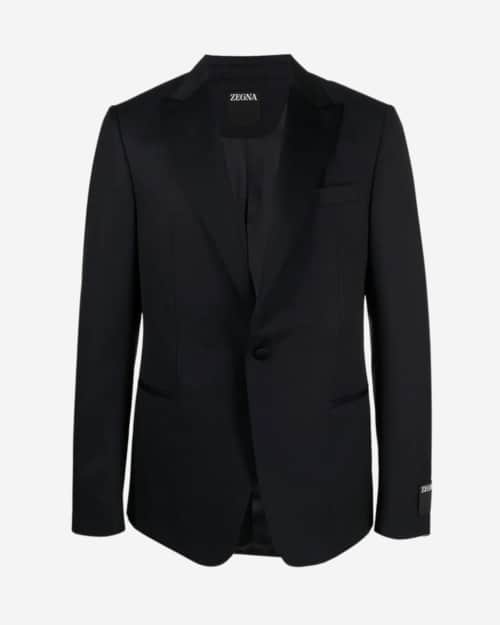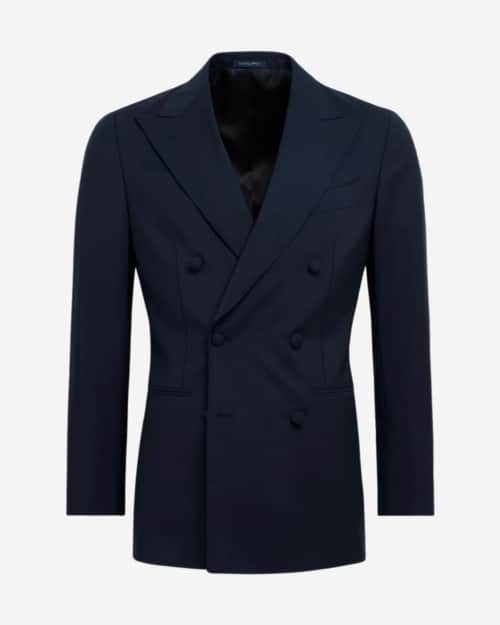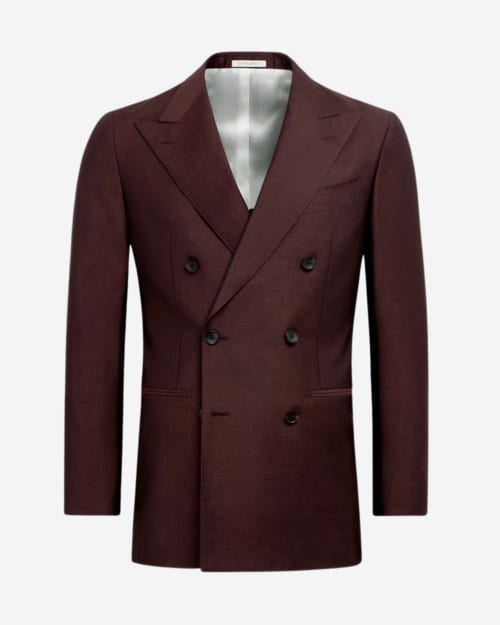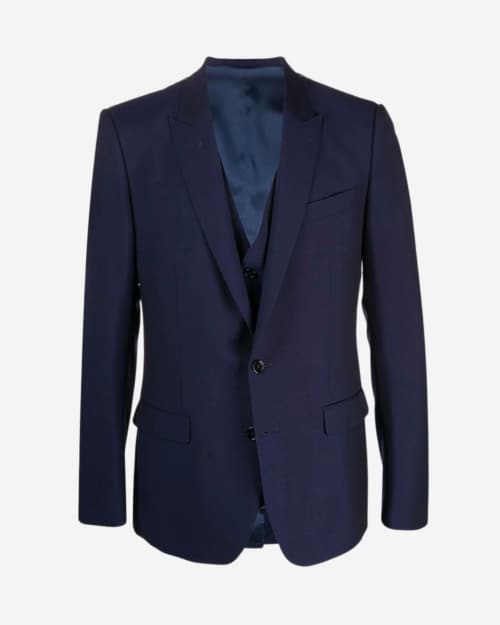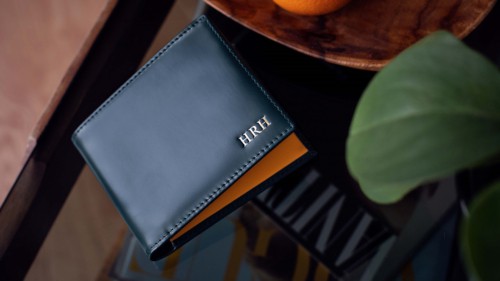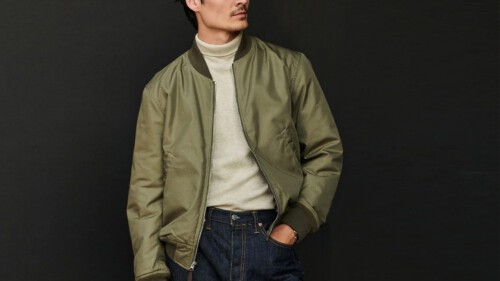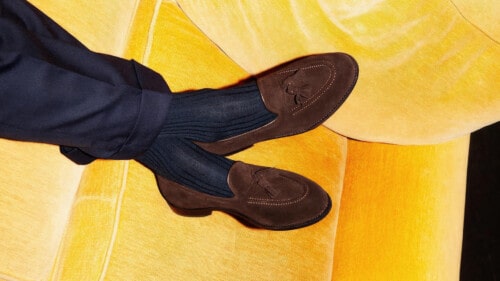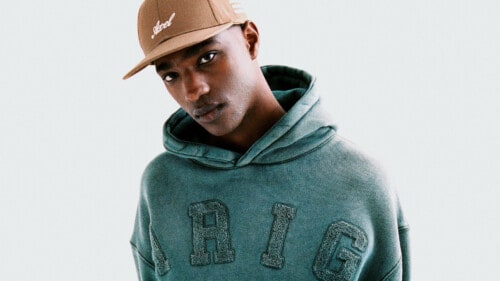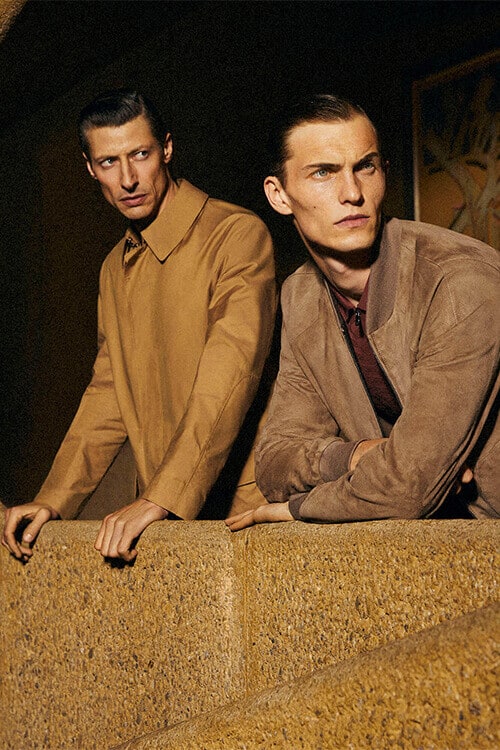
The Ultimate Guide To The Mohair Suit
The mohair suit has staged a comeback in recent years, thanks to its high-performance properties and inimitable sheen. Here’s why you should consider adding it to your tailoring collection.
There are not a huge amount of fashion trends that came to life in the 60s and are still relevant today, but the mohair suit is certainly one of them. Recognisable by its unique iridescence, the mohair suit was widely adopted by jazz musicians of the late 50s before the Mods of the 60s took it mainstream.
In a sea of matte wool tailoring, mohair styles floated to the top. Instantly eye-catching, the fibres of the cloth almost seem to dance in the light. But besides its obvious visual qualities, mohair – which is taken from the Angora goat – is also an amazingly technical fabric, with its fine fibres boasting greater tensile strength than steel, as well as being extremely breathable.
There are some ethical considerations to make when deciding to purchase a mohair suit, but if the right boxes are ticked, it makes for a superb luxury suit to add to your sartorial arsenal.
What is mohair?
Pure mohair is derived from the Angora goat (not to be confused with ‘angora wool’, which comes from the Angora rabbit) – specifically the undercoat of young goats where the hair is fine, silky and dense. The properties of the fibres are pretty astounding, being super-strong and crease-resistant, with excellent temperature- and moisture-regulating properties, as well as being able to take dyes extremely well.
It is almost always blended with wool to create a two-tone fabric known as ‘Tonik’, which has a uniquely textural finish thanks to the open weave of the mohair. Hence mohair suits have a slightly furrier handle than your typically smooth 100% merino cloth versions.
Fine mohair comes from young Angora goats, due to the differences in the diameter of the fibres (as the goats grow up, the fibres become longer and coarser). Young Angora goats normally produce a fibre with a diameter of 24-28 microns while adult goats produce fibre of approximately 36-46 microns. The latter is not really suitable for luxury tailoring, but could be used for outerwear blends.
Is mohair ethical?
South Africa, and specifically Port Elizabeth in the Eastern Cape, is the world’s leading producer of mohair, followed by the US and the likes of Australia and Turkey. The South African mohair is widely regarded as the finest in the world. Much has been written about ethical standards in the mohair industry, with some shocking reports of animal cruelty over the years, but the industry has been working hard to clean up its reputation, working with the non-profit organisation Textile Exchange to create the Responsible Mohair Standard.
Launched in March, 2020, the RMS is a voluntary standard that addresses the welfare of goats and the land they graze on. Whenever you are thinking about purchasing a product with mohair, always try and find out if the supplier complies with the RMS standard.
Why you should consider a mohair suit
Aside from mohair’s technical prowess, the style considerations are the primary drivers – so what exactly are they?
Number one among them is the sheen of the fabric, which works a charm with black and midnight navy suits and tuxedos. Mohair seems to respond best to these darker tones, in stark contrast to the shiny red and green mohair suits once popular with skinheads. Given that black and navy dyed wools don’t reflect a great deal of light, the addition of mohair can really bring them to life.
Frequent business travellers would also be well served in shopping around for mohair blends due to its excellent crease-resistant properties. It’s why the James Bond of the 60s and 70s often wore mohair suits – the lack of creasing made it easier to film in. Any cloth with 20% (up to about 50%) mohair will take advantage of this propensity to spring back when crumpled (even more so if the wool used has a high twist), but anything more than 60% mohair will make for a pretty rough and abrasive fabric.
The sweet-spot tends to be 35% mohair and 65% wool. Due to its heat-regulating and moisture-wicking abilities, mohair blends also make for excellent warm-weather tailoring, so if you live in a temperature climate it’s an excellent choice.
Because it takes dye well, you can find mohair blended with many different tones of wool. In the summer, it adds a subtle glow to neutrals such as off-white, light grey and tobacco, while in the winter it will bring a rich yet delicate sheen to dark tones.
How to wear a mohair suit
In our opinion, prime mohair real estate exists in the realm of the luxury lounge suit. In navy, midnight, dark charcoal or black, mohair’s qualities are plain to see, adding a unique lustre to otherwise light-absorbing tones. It’s why mohair blends are often used in high-end dinner suits, too.
A beautifully tailored navy or mid-blue single-breasted, two-button business suit afforded a little pearlescence courtesy of a mohair blend speaks volumes about the confidence and gravitas of the wearer.
In the summer months, the technical properties of mohair come to the fore, especially when blended with wool and silk cloths, adding a delightful lustre to ivory and off-white tones.
The best mohair suit brands in 2024
Ozwald Boateng
Given the high price of mohair, the fibre is most often found at the high-table of tailoring, namely bespoke. This makes any one of Savile Row’s storied tailoring houses a great destination for a mohair suit, but perhaps none more so than Ozwald Boateng who is unparalleled in his use of colour.
Boateng’s dazzling creations often use mohair to bring out the best of the vibrant dyes, cut in his signature slim silhouette for a really striking look. If budget is not a consideration, then Boateng should be your first port of call.
Paul Smith
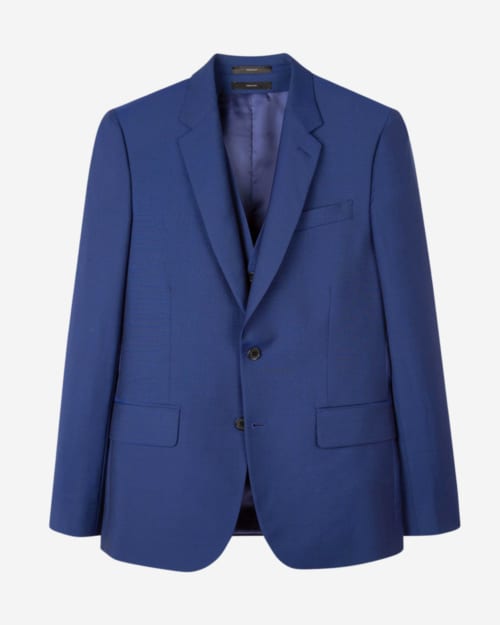
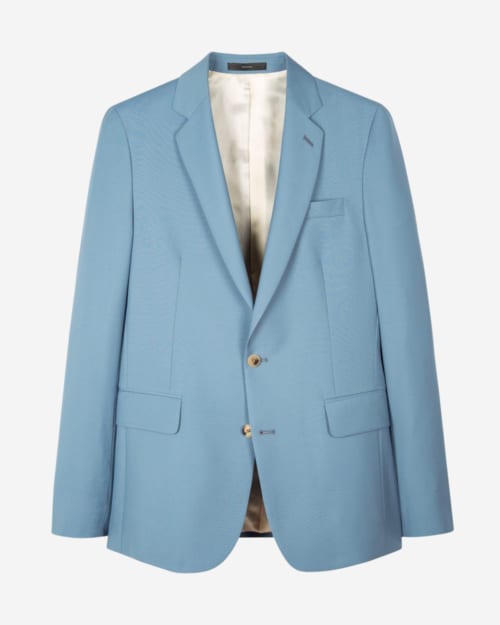
An icon of British style, Sir Paul Smith has always pushed the boundaries of menswear, and in suiting he has been one of the foremost proponents of the creaseless travel suit. Hence the brand is no stranger to the properties of mohair.
Smith produces mohair-wool blends in his signature Soho fit, as well as a looser tailored silhouette and an eveningwear suit, preferring a 16% mohair cloth for a subtle sheen and smooth finish.
Tom Ford
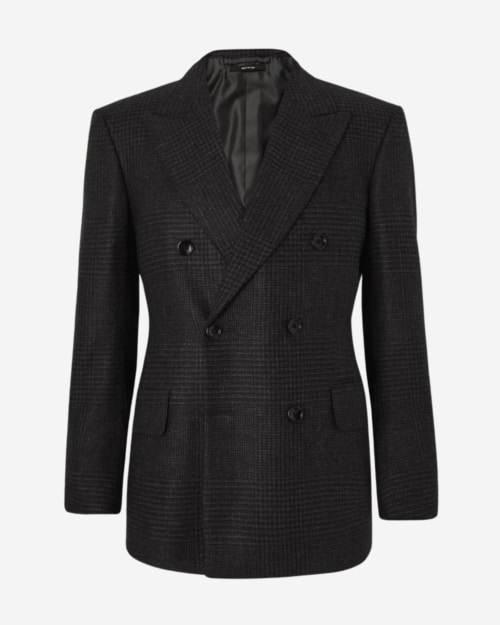

The renowned American designer is well-known for his expertise with fine fabrics so it should come as no surprise that mohair plays a significant part in Ford’s dressy tailored collections.
You’ll often find Ford using a silk, wool and mohair blend in some of his more extravagant evening suits, which are perfect for important occasions such as black tie events.
Prada

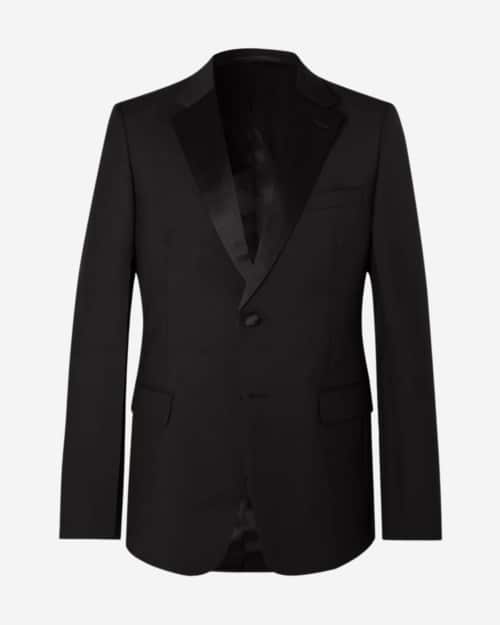
Miuccia Prada’s extensive use of mohair is defined by black and navy single-breasted suiting with a slim, sleek and minimalist aesthetic. Constructed with 16% mohair, the pearlescent quality is subtle, making these suits ideal for wearing to the office for an authoritative look full of confidence.
Kingsman
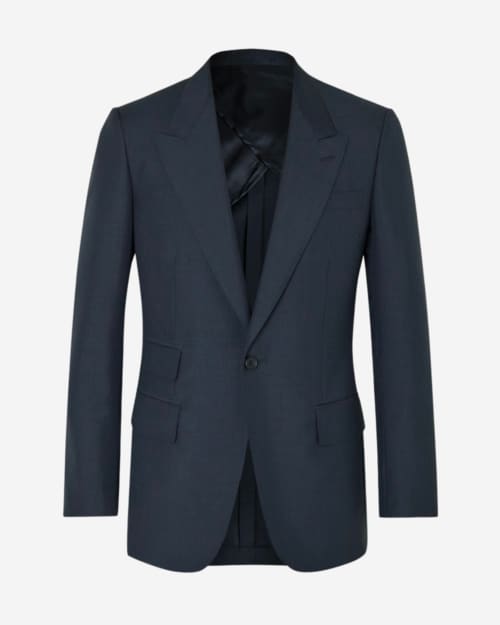
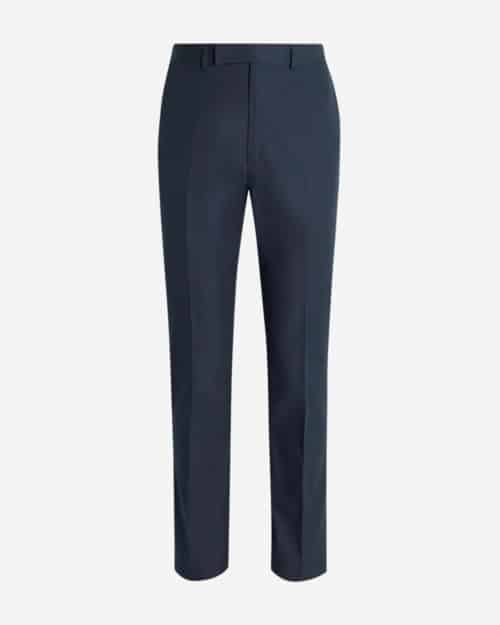
MR PORTER’s spin-off tailoring label, named after the eponymous film, has garnered serious clout as a great-value suitmaker with a penchant for classic cuts. Exacting standards are the brand’s philosophy, hence why it regularly uses mohair blends in its collections.
This season, it has produced a beautiful tonal navy mohair suit in a slim cut. Interestingly, the mohair count is high at 60%, which as previously mentioned is the very upper level before the fabric becomes too coarse. A suit of this level of mohair will make for a brilliant travel suit as it is almost impervious to creasing.
Zegna
The vertical operations at Italian fashion behemoth Zegna means that the cloths it produces are second-to-none. Its mohair blends are therefore some of the finest fabrics on the planet.
It usually reserves mohair for its summer collections due to its excellent heat-regulating properties, but you will occasionally find navy and black winter season options, too.
Suitsupply
The Dutch tailoring brand made its name producing affordable suits cut in cloths from some of the world’s most well-respected mills. Naturally then, it has a plethora of mohair blends for you to choose from.
A stunning mid-blue houndstooth suit consisting of 55% wool, 19% mohair, 17% silk, 9% cashmere is the pick of the lot, with a slim fit, broad notch lapel and natural shoulder.
Dolce & Gabbana
Messrs Stefano and Domenico are fond of a touch of glitz, so you’ll often find the inclusion of mohair blends in the brand’s evening suit collection.
This season it has created a rich burgundy cocktail suit in its aptly named ‘martini-fit’ – that being a slim, two-button peak lapel number comprising 22% mohair – perfect for parties or just looking that much more extra than everyone else.
Alexander McQueen
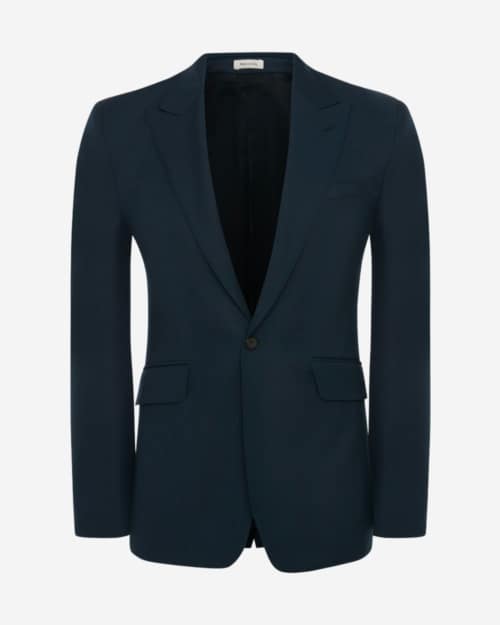
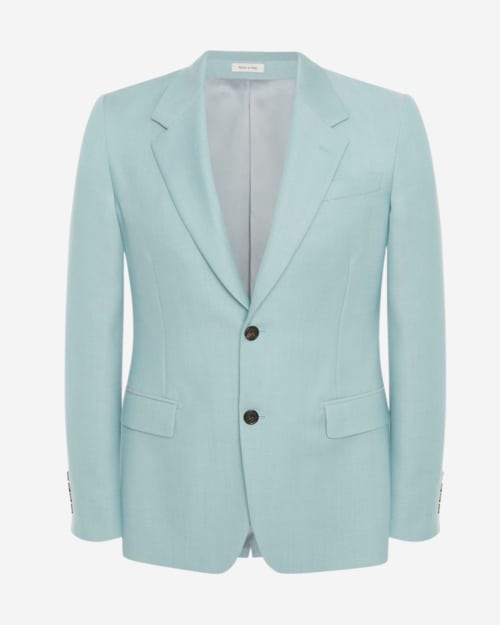
If you’re on the hunt for an iconic suit silhouette with a fashion bias, there is no better than Alexander McQueen. This season Creative Director Sarah Burton has crafted an exquisitely noir-ish black single-breasted mohair jacket with a two-button fastening that perfectly exemplifies the brand’s edgy heritage and design ethos.

